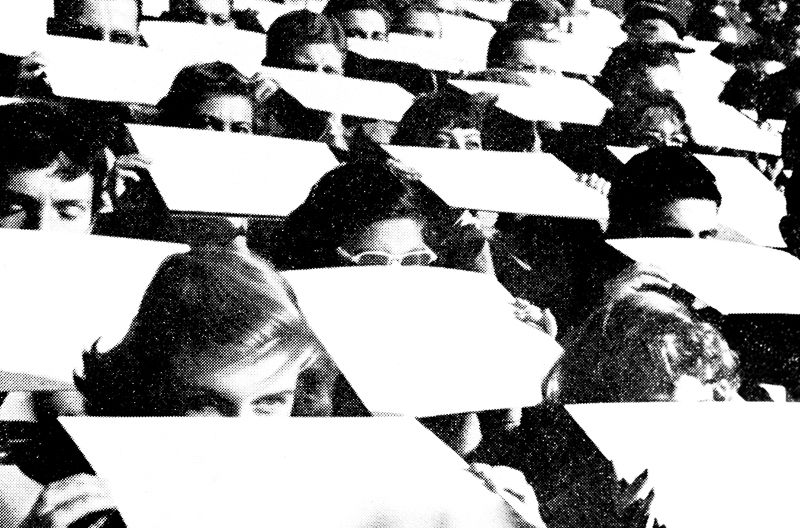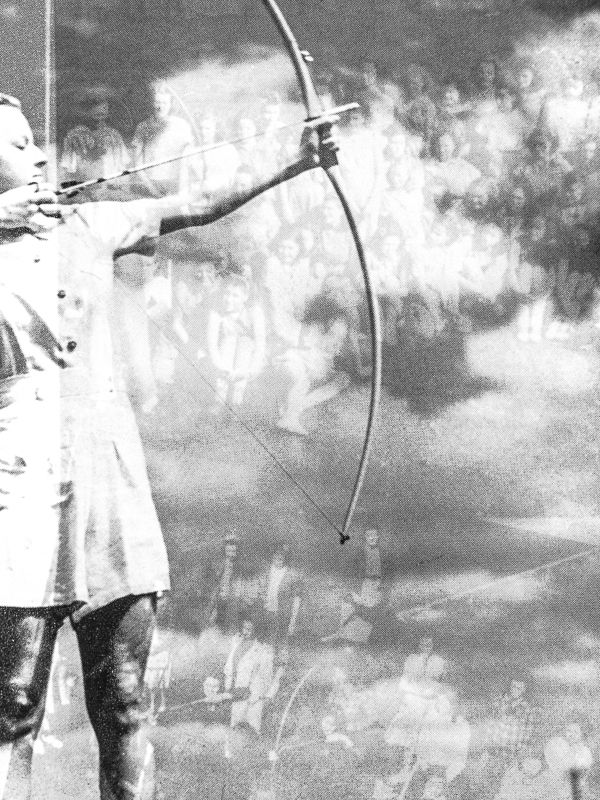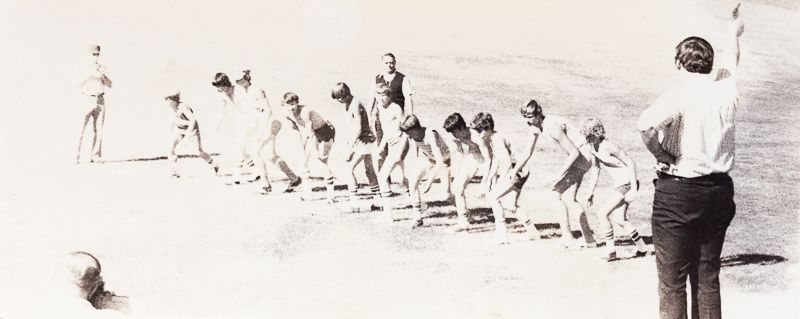blog
Interview with artist Megan Magill by William Cox

except when they don’t, because sometimes they won’t
William Cox: Describe your work for someone viewing it for the first time.
Megan Magill: I collect objects and imagery because they resonate with me in a very personal way and I use them in my work to comment about, and at times criticize, the world around me. Although my outlook is outward, the way I process imagery and the ideas that they generate is intensely personal. My process involves removing snapshots and yearbook imagery from their original context, cropping and processing them to highlight certain moments, and re-contextualizing them into installations with other dissociated imagery and objects in order to simultaneously deconstruct them and create new meanings. I try and highlight the long history of societal pressure to present ourselves in a certain light through imagery that is supposed to be personal but yet is often totally dictated by societal expectations. However, while it is easy for me to point out how these representations are constructed, I do not want my work to only point out where we get it wrong because that would indicate that I am not also complicit. I struggle with these issues and try to unearth them because they play a significant role in my own life. This is evident in the fact that I don’t make work with a concept in mind. Instead, I let the work develop over time and find what it is I am talking about almost after the fact. For instance, The Habit of Winning developed not as a concept project, but slowly over time as an issue that I was having in my own life. I strive on an almost daily basis to find a balance between my desire to win and my desire to connect to something that goes beyond winning in scope and in meaning. Something that is bigger than myself or my accomplishments. Something that we can all share. Ultimately my art is an attempt to understand the world and my experience of this world through the objects I am drawn to and find meaning in.

you’ll be famous, as famous as can be, with everyone watching you win on TV
WC: You deal with appropriated photographs in your work. Do you consider yourself more a photographer, curator or some other kind of artist?
MM: I have always identified more as an artist who uses the medium of photography in my work than as a photographer. I appropriate imagery in order to create new meanings and conversations. If all a viewer sees is the fact that ‘I am not using my own work’ I would challenge them to really look at what it is that I am doing and how I am using the imagery that I appropriate. I want people to look at the forest not just the trees.
WC: You talk about not making work with a concept in mind but letting a project evolve. How did the idea of recontexting appropriated images first come about to you? What or who was your inspiration? Did you find images were speaking to you in a more personal way?
MM: In my early work I used a doll and props to ‘construct’ images that I considered to be self-portraits. I place the word ‘construct’ in quotes because I was not in fact always constructing. Having an idea for an image was always my starting point, but I found I was interacting with the objects in my process more than I was constructing with them. Now I know that an object can’t exactly ‘interact’ so I guess what I mean by that is I became open to the process of creating work without a pre-conceived concept in mind as I found over time that the images that I let happen were often the best ones. I used a Macro lens to make much of that work and developed a way of seeing that I felt connected to and comfortable with. When I first started looking at existing imagery I started with what was at hand- my own family snapshots. I basically would just sort through the images to find ones that I was drawn to and then I looked through my lens to re-shoot them, often cropping out a lot of the existing image and changing the focus. I am sure scanning them would be easier but that would leave out the seeing (or how I see) which is basically the point. My first work with existing imagery really revolved around trying to resolve personal issues related to my own personal history. I, in many ways, found that I was looking for clues as to why things had happened the way they did. Over time I branched out to using imagery that I sourced from friends and then antique store and found that I could connect to the images of ’strangers’ in very much the same way.

you don’t often win, but sometimes you do
WC: What makes a good series?
MM: Not sure I can say what makes a good series from a universal standpoint but I can say what speaks to me. In many ways I have always struggled with the concept of a ‘series’. I think it can be done well and it is an effective way to really talk about a project but sometimes I think it is a bit confining. For instance, I think that some photographers make the work fit the series instead of the other way around. If the work ‘fits’ the series too well I think it loses some of its life. Ok that might sound a bit like mumbo jumbo but what I mean is that I connect to work that leaves some doors open. There has to be a thread through the project but I think that thread should be a loose one with room for other ideas to get in.
For more of Megan Magill’s work: megan-magill.com
Location: Online Type: Featured Photographer, Interview
Events by Location
Post Categories
Tags
- Abstract
- Alternative process
- Architecture
- Artist Talk
- Biennial
- Black and White
- Book Fair
- Car culture
- Charity
- Childhood
- Children
- Cities
- Collaboration
- Community
- Cyanotype
- Documentary
- Environment
- Event
- Exhibition
- Faith
- Family
- Fashion
- Festival
- Film Review
- Food
- Friendship
- FStop20th
- Gender
- Gun Culture
- Hom
- home
- journal
- Landscapes
- Lecture
- Love
- Masculinity
- Mental Health
- Museums
- Music
- Nature
- Night
- nuclear
- Photomontage
- Plants
- Podcast
- Portraits
- Prairies
- Religion
- River
- Still Life
- Street Photography
- Tourism
- UFO
- Water
- Zine

Leave a Reply